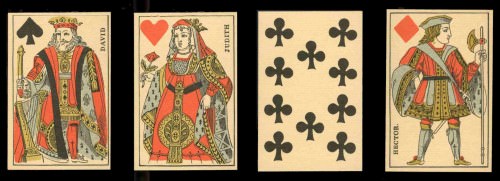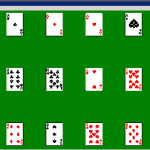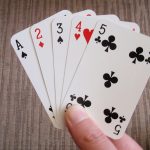Content Table:
The Origin of Playing Cards
Playing cards made their way to Europe from the East, first appearing in France and later in Spain. The common belief that they originated in Italy stems from the design of the cards, which closely resembles the Mamluk design. The early packs of cards consisted of 52 cards divided into four suits: swords, polo sticks, cups, and coins. Each suit contained cards numbered from one to ten, along with court cards that included the King (Malik), Deputy King (Naib Malik), and Second Deputy (Thain Naib).
Ancient Roots: Ganjifa and Kanjifah
Before their arrival in Europe, Persia and India had their own versions of playing cards known as Ganjifa. These decks typically contained 48 cards, with four suits, ten numerals, and two court cards in each suit. Over time, the number of suits increased, and in Arabia, card decks became known as Kanjifah.
The European Craze
As playing cards reached Europe, they quickly gained popularity. By 1377, they were seen in Switzerland, and by 1380, they had spread to Florence, Basle, Regensberg, Paris, and Barcelona. This marked the beginning of the widespread fascination with playing cards across the continent, leading to their evolution into various styles and designs.
Handcrafted to Mass Production
Initially, playing cards were handmade, featuring intricate designs that were painstakingly painted by artisans. Due to their craftsmanship, these cards were quite expensive, making them a luxury item predominantly used by the wealthy. However, as the demand grew, cheaper versions became available through mass production. This accessibility led to the proliferation of playing cards across all social classes.
The mass-produced cards, while less ornate, allowed a broader audience to enjoy the games that were once reserved for the elite. As the prices dropped, playing cards became commonplace, and they started to appear in households of various socioeconomic backgrounds.
Evolution and Modern Variations
Today, playing cards are typically made from stiff paper and often feature various enhancements, such as lamination for durability. They come in a variety of sizes, including mini cards for travel and large-print cards designed for the visually impaired. This evolution reflects the ongoing popularity of playing cards, which continue to be a source of entertainment worldwide.
The Cultural Impact of Playing Cards
Playing cards have transcended their original purpose, becoming not only a medium for games but also a significant part of cultural history. They have inspired numerous variations, from classic games like Poker and Bridge to modern adaptations seen in digital formats. Their influence can be observed in art, literature, and even psychology, highlighting their deep-rooted presence in human culture.
Moreover, playing cards have often served as a social tool, bringing people together for fun, competition, and camaraderie. Whether in casual settings with friends or in competitive tournaments, the simple deck of cards continues to facilitate connections among people.
Conclusion
In conclusion, the origin of playing cards is a fascinating journey that spans centuries and continents. From their early inception in the East to their widespread adoption in Europe, playing cards have evolved significantly. Today, they remain a beloved pastime for millions, embodying a rich history that continues to grow with each passing year.
So next time you shuffle a deck or deal a hand, take a moment to appreciate the storied past of playing cards and their enduring legacy in the world of games and entertainment.



